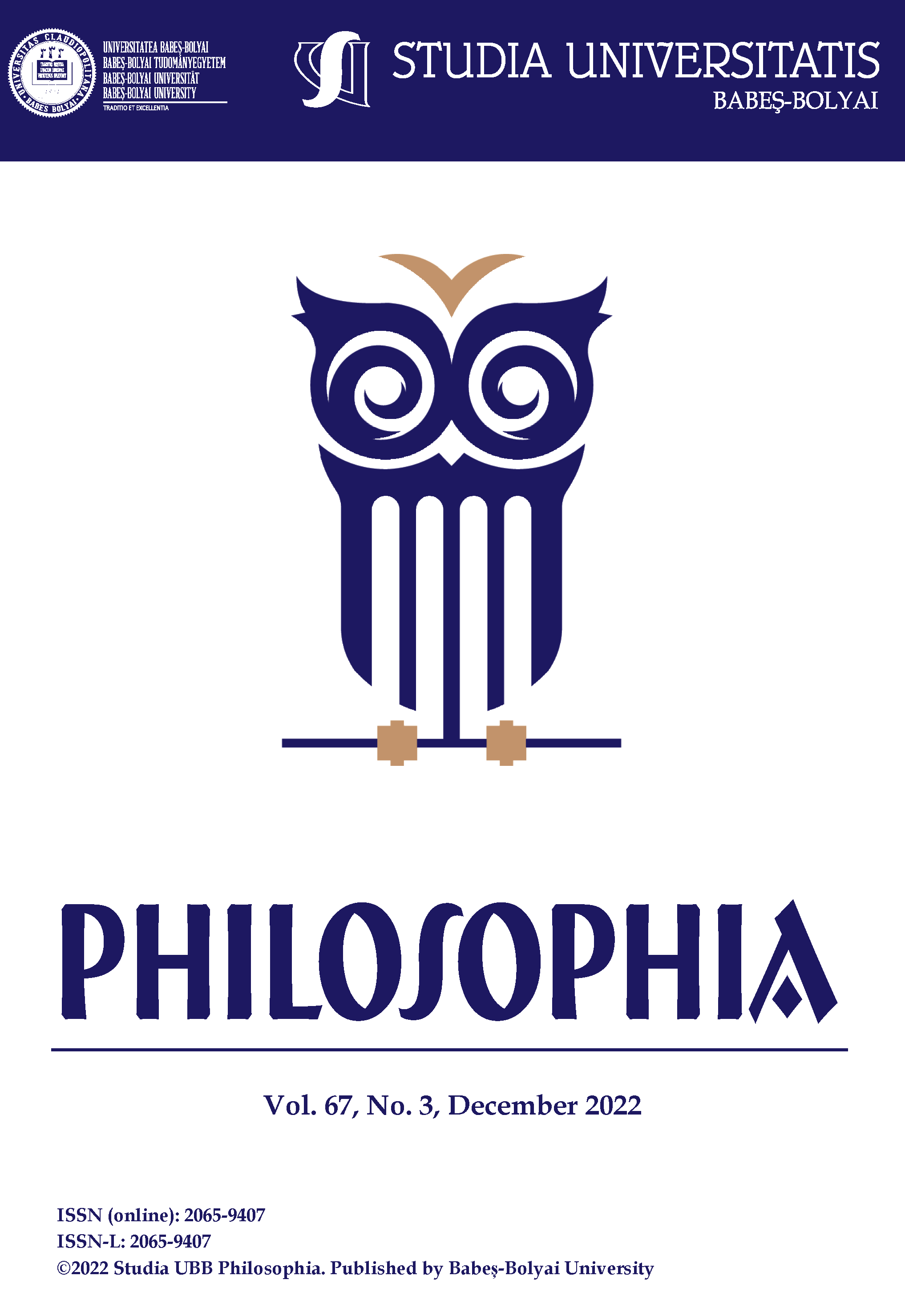MUTUAL INCORPORATION, INTERCORPOREALITY, AND THE PROBLEM OF MEDIATING SYSTEMS
DOI:
https://doi.org/10.24193/subbphil.2022.3.02Keywords:
intercorporeality, participatory sense-making, mediating technologies, presenceAbstract
In this paper, I explore the ways that phenomenological concepts like intercorporeality and mutual incorporation offer new tools in trying to make sense of human experiences via mediating systems. In particular, I think about how the COVID-19 pandemic hastened a large population into mediated interactions, and what is lost, perhaps contingently or perhaps intrinsically, when human experiences are mediated in this way. I look to research in presence, skillful interaction, and enactive social cognition to argue that there remains something ineffable or at least extremely hard to pin down about intercorporeality, and embodied togetherness has not yet been replicated in the mediating systems we currently embrace.
References
Auvray, M., Lenay, C., Stewart, J., “Perceptual interactions in a minimalist virtual environment”, New Ideas in Psychology, 27, 2009, 32-47.
Candadai, M., Setzler, M., Izquierdo, E., Froese, T., “Embodied dyadic interaction increases complexity of neural dynamics: A minimal agent-based simulation model”, Frontiers in Psychology 10, 2019.
Chemero, A., “Sensorimotor Empathy”, Journal of Consciousness Studies 23(5), 2016, 138-152.
De Jaegher, H., and Di Paolo, E. A., “Participatory Sense-making”, Phenomenology and the Cognitive Sciences, 6(4), 2007, 485-507.
Di Paolo, E., "Extended Life", Topoi 28, 2009, 9-21, https://doi.org/10.1007/s11245-008-9042-3.
Fuchs, T. and De Jaegher, H., “Enactive Intersubjectivity: Participatory Sense-Making and Mutual Incorporation”, Phenomenology and the Cognitive Sciences 8, 2009, 465-486.
Hayles, N. K., How We Became Posthuman: Virtual Bodies in Cybernetics, Literature, and Informatics, University of Chicago Press, 1999.
Keating, E., “Challenges of Conducting Interaction with Technologically Mediated Bodies”, in Meyer, Streeck, and Jordan (eds.), Intercorporeality: Emerging Socialities in Interaction, Oxford University Press, 2017, 303-322.
Merleau-Ponty, M., “The Philosopher and his Shadow”, in Signs by M. Merleau-Ponty, translated by R. McCleary, Northwestern University Press, 1964, 159-181.
Meyer, C., Streeck, J., and Jordan, J.S., Intercorporeality: Emerging Socialities in Interaction, Oxford University Press, 2017.
Minsky, M., “Telepresence”, Omni, 1980, 44-52.
Noë, A., “The enactive approach: a briefer statement, with some remarks on ‘radical enactivism’ ”, Phenomenology and the Cognitive Sciences, 2021, published online: 03, July 2021.
Noë, A., Varieties of Presence, Harvard University Press, 2012.
Noë, A., Out of Our Heads: Why You are Not Your Brain, and Other Lessons from the Biology of Consciousness, Hill and Wang, 2009.
Reed, K. B., Peshkin, M., Hartmann, M. J., Grabowecky, M., Patton, J., and Vishton, P. M., “Haptically linked dyads: Are two motor control systems better than one?”, Psychological Science 17(5), 2006, 365-366.
Slater, M., “A Note on Presence Terminology”, Presence connect 3 (3), 2003, 1-5.
Slater, M., Lotto, B., Arnold, M. M., Sanchez-Vives, M. V., “How we experience immersive virtual environments: the concept of presence and its measurement”, Annuraio de Psicologia 40(2), 2009, 193-210.
Zebrowski, R., We Are Plastic: Human Variability and the Myth of the Standard Body, Doctoral Dissertation, 2009.
Downloads
Published
How to Cite
Issue
Section
License
Copyright (c) 2022 Studia Universitatis Babeș-Bolyai Philosophia

This work is licensed under a Creative Commons Attribution-NonCommercial-NoDerivatives 4.0 International License.





